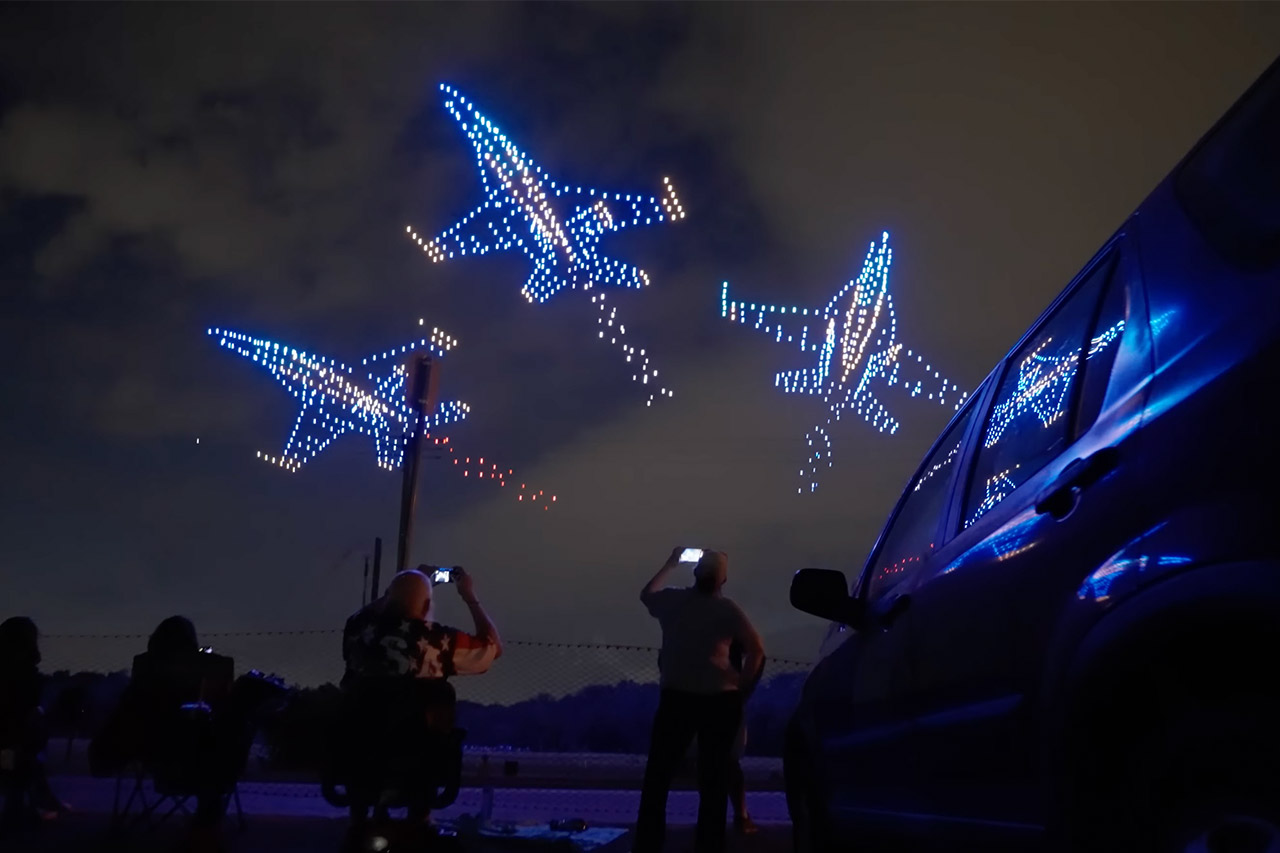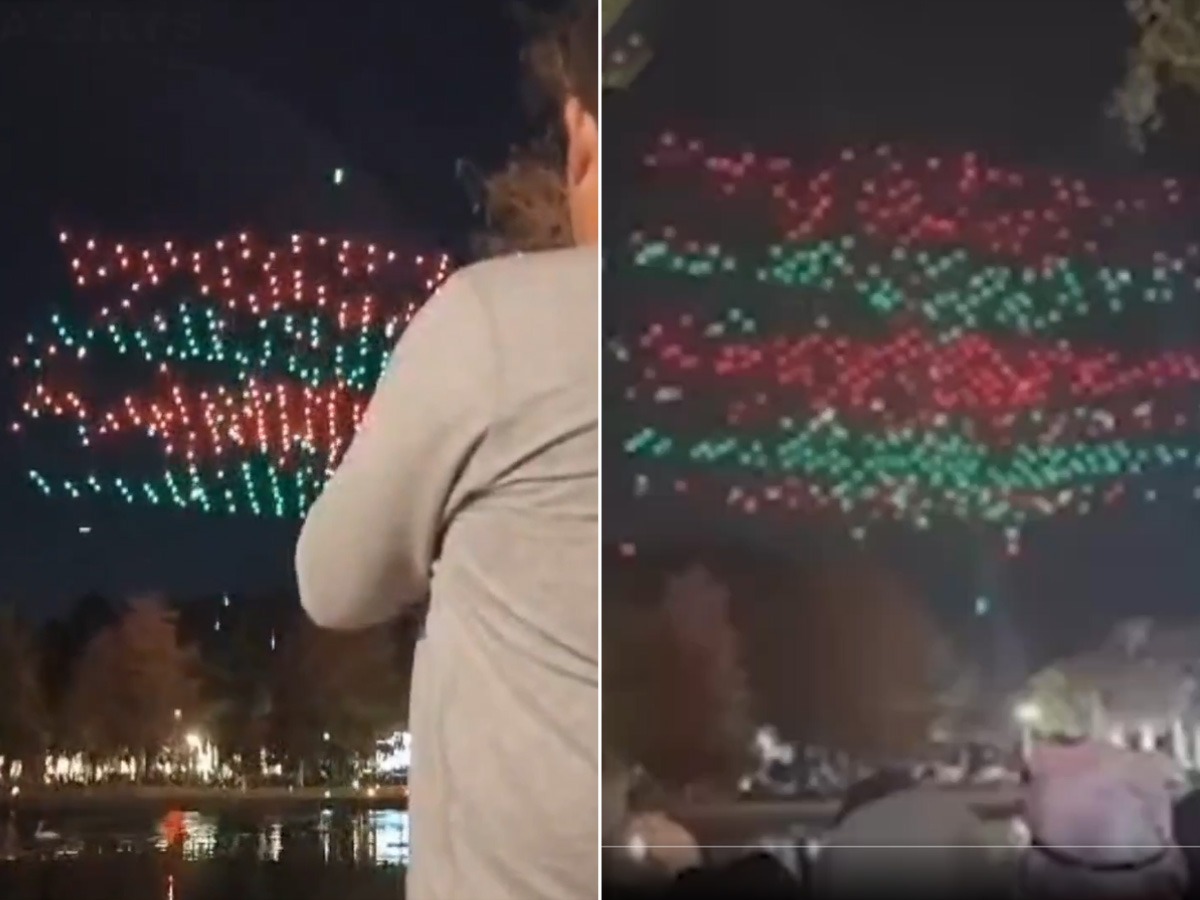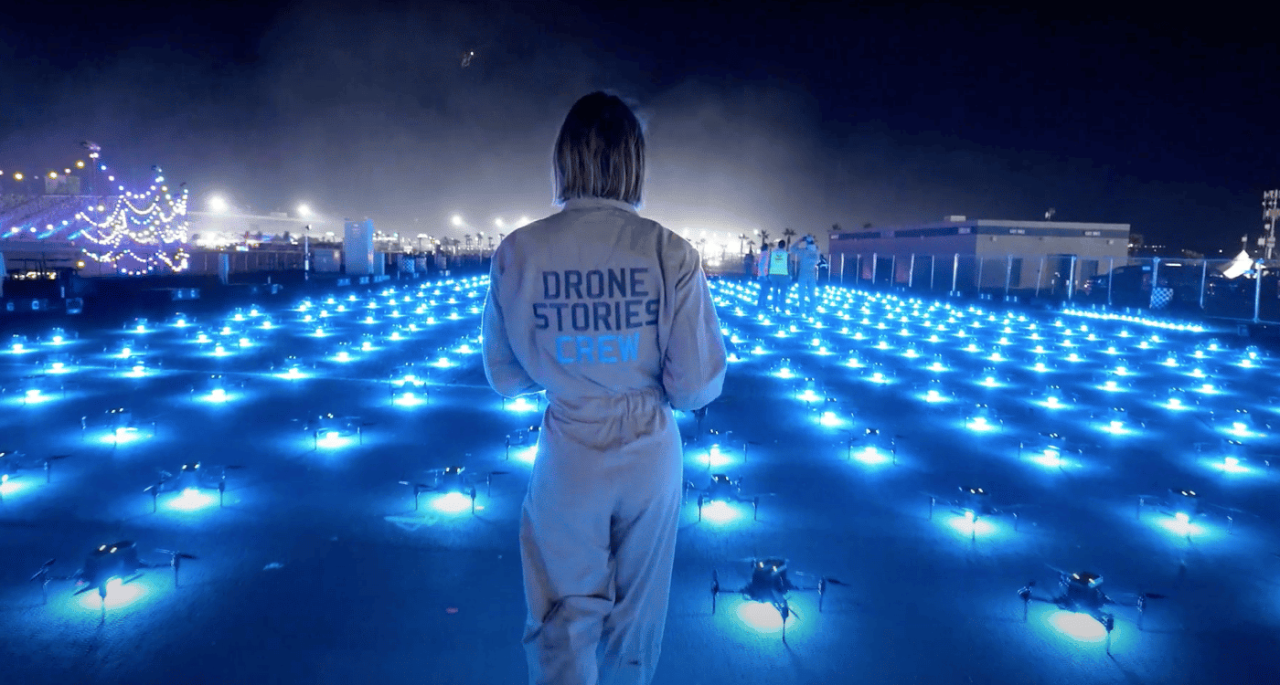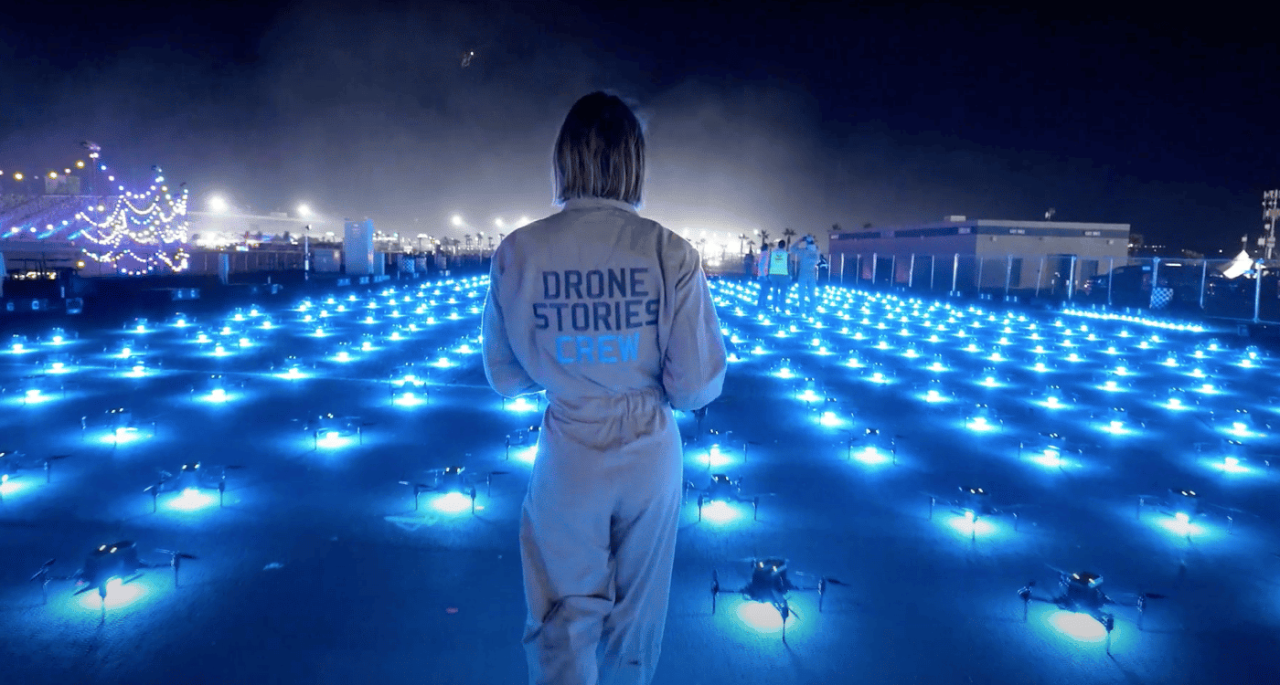Florida Drone Show: Imagine breathtaking aerial displays illuminating Florida’s iconic landscapes. This guide delves into the world of drone shows in the Sunshine State, exploring the regulations, ideal locations, diverse show types, cutting-edge technology, economic impact, and crucial safety considerations. From obtaining permits to understanding airspace restrictions and appreciating the technological marvels involved, we uncover the captivating aspects of this rapidly growing industry.
We will examine the various types of drone shows, from themed spectacles to advertising campaigns and artistic performances, comparing their technical demands, audience appeal, and costs. Furthermore, we’ll analyze the economic benefits for Florida’s tourism and entertainment sectors, highlighting job creation and revenue generation. Safety remains paramount, and we’ll discuss crucial protocols and best practices to ensure both audience and operator well-being.
Florida Drone Show Regulations and Permits
Navigating the regulatory landscape for drone shows in Florida requires a clear understanding of permit processes, airspace restrictions, and potential penalties. This section Artikels the necessary steps for both commercial and private drone show operators.
Obtaining Permits for Drone Shows in Florida
The process of obtaining a permit for a drone show in Florida typically involves submitting an application to the Federal Aviation Administration (FAA) and potentially local authorities. Applicants must demonstrate compliance with all relevant regulations, including those pertaining to airspace restrictions, flight limitations, and pilot qualifications. The FAA will review the application and, if approved, issue a necessary authorization.
Local permits may also be required depending on the location and scale of the event.
Airspace Restrictions and Flight Limitations
Florida’s airspace, like that of other states, is subject to various restrictions. Drone operators must adhere to limitations on altitude, distance from airports, and operations near populated areas. These restrictions are crucial for ensuring the safety of manned aircraft and the public. Detailed airspace maps and regulations are available through the FAA website and should be consulted before any drone operation.
Permit Requirements: Commercial vs. Private Drone Shows
The permit requirements differ significantly between commercial and private drone shows. Commercial operations, involving monetary compensation or business activities, require more stringent approvals and often necessitate additional insurance and liability coverage. Private drone shows, for non-commercial purposes, may have less rigorous permitting processes, but still must comply with all FAA regulations.
Penalties for Non-Compliance
Failure to comply with Florida’s drone show regulations can result in severe penalties, including hefty fines, suspension or revocation of operating privileges, and even criminal charges. The severity of the penalty depends on the nature and extent of the violation.
Popular Locations for Florida Drone Shows
Florida offers numerous picturesque locations suitable for spectacular drone shows. The ideal location depends on factors like airspace, visibility, and accessibility, as well as the desired aesthetic and logistical considerations.
Ideal Locations for Drone Shows in Florida
Five ideal locations in Florida for drone shows, considering factors like airspace, visibility, and accessibility, are highlighted below. Each location presents unique opportunities and challenges.
| Location Name | Accessibility | Airspace Considerations | Unique Features |
|---|---|---|---|
| Cocoa Beach Pier | High, ample parking and public transportation access | Proximity to Cape Canaveral Space Force Station requires careful airspace coordination. | Oceanfront views, iconic pier backdrop, potential for unique lighting effects. |
| St. Augustine’s Historic District | Moderate, parking can be limited, walking access to viewing areas. | Requires careful planning due to historic buildings and potential for obstructions. | Historic architecture, charming streets, opportunity for themed shows. |
| Siesta Key Beach | High, ample parking, easily accessible by car and boat. | Open airspace, good visibility, but requires consideration of beachgoers. | White sand beaches, clear waters, stunning sunset views. |
| Everglades National Park (designated areas) | Moderate, requires careful planning due to remote locations and limited infrastructure. | Requires special permits and coordination with park authorities due to environmental sensitivity. | Unique natural landscape, potential for showcasing wildlife (with appropriate precautions). |
| Orlando (select areas outside theme parks) | High, excellent infrastructure, but requires careful airspace management due to nearby airports and theme parks. | Complex airspace, requires extensive coordination with various stakeholders. | Large open spaces, potential for large-scale events. |
Types of Drone Shows in Florida
The diversity of drone shows in Florida reflects the state’s vibrant entertainment scene. Shows can range from themed spectacles to artistic performances, each with unique technical requirements and audience appeal.
Comparing Different Types of Drone Shows, Florida drone show

- Themed Shows: These shows utilize storytelling and visual narratives, often synchronized with music and sound effects. They require sophisticated choreography and programming. Audience appeal is high due to the engaging storyline.
- Advertising Displays: These shows focus on promoting brands or products through visual representations. They typically involve simpler choreography and less complex programming. Audience appeal depends on the brand’s recognition and the show’s visual impact.
- Artistic Performances: These shows emphasize creativity and artistic expression, often pushing the boundaries of drone technology. They require highly skilled pilots and programmers. Audience appeal is high for those interested in art and technology.
Hypothetical Drone Show Concept
A hypothetical drone show in Florida could be themed “Celebrating Florida’s Natural Beauty.” The choreography would involve drones forming images of Florida’s iconic landscapes—beaches, swamps, and wildlife—synchronized with music evoking the state’s natural ambiance. The target audience would be tourists and Florida residents interested in nature and technological spectacles.
Technological Aspects of Florida Drone Shows
The success of a Florida drone show hinges on sophisticated technology, encompassing drone hardware, software, and control systems. Innovative technologies continually enhance the visual spectacle and creative possibilities.
Essential Drone Technology
Modern drone shows utilize specialized drones equipped with high-intensity LEDs, GPS modules for precise positioning, and robust communication systems for coordinated flight. The drones are typically lightweight yet durable to withstand the rigors of flight and potential environmental factors.
Software and Flight Control Systems
Sophisticated software and flight control systems are critical for coordinating the movements of numerous drones. These systems enable precise choreography, synchronization with music and sound, and real-time adjustments during the show. Advanced algorithms ensure the drones maintain safe distances and avoid collisions.
Innovative Technologies Enhancing Visual Impact
Innovative technologies like GPS-based formation flying, advanced lighting effects (such as color-changing LEDs and dynamic patterns), and integrated sound systems enhance the visual impact of drone shows. Some shows even incorporate projection mapping onto the drones themselves.
Integrating Lighting, Sound, and Special Effects

Integrating lighting, sound, and other special effects seamlessly into a drone show presents logistical challenges. Careful synchronization and coordination between the drone control system, lighting rigs, and sound systems are essential for a cohesive and impactful experience. Precise timing and effective communication between different technical teams are crucial.
Economic Impact of Drone Shows in Florida
Drone shows contribute significantly to Florida’s economy by attracting tourists, generating revenue, and creating jobs within the entertainment and tourism sectors. The economic benefits extend beyond immediate ticket sales.
Economic Benefits of Drone Shows
Drone shows attract visitors to Florida, boosting tourism revenue through hotel stays, dining, shopping, and other related expenditures. They also generate revenue directly through ticket sales and sponsorships. The growth of the drone show industry creates jobs for drone pilots, programmers, technicians, and event organizers.
Florida drone shows are becoming increasingly popular, offering spectacular nighttime displays. However, the industry also faces challenges, as evidenced by recent incidents; for example, a concerning florida drone accident highlighted the importance of safety regulations and operator training. Ultimately, ensuring responsible operation is crucial for the continued success and enjoyment of Florida drone shows.
Job Creation and Revenue Generation
The expanding drone show industry creates opportunities for skilled professionals in various fields, including software engineering, drone piloting, event management, and technical support. The revenue generated from drone shows supports local businesses and contributes to the overall economic growth of the communities where they are held.
Hypothetical Economic Impact Scenario

A large-scale drone show held in a smaller Florida community, like St. Augustine, could generate significant economic benefits. The influx of tourists would boost hotel occupancy, restaurant sales, and retail spending. The event could also attract media attention, further enhancing the community’s tourism profile and long-term economic prospects. A well-managed event could lead to a substantial increase in local revenue and job opportunities, potentially exceeding initial projections based on similar events in comparable locations.
Florida drone shows are becoming increasingly popular, offering spectacular nighttime displays. However, the inherent risks are highlighted by incidents like the one documented in this report on a drone show accident , underscoring the need for stringent safety protocols. Understanding these risks is crucial for ensuring the continued success and safety of Florida’s vibrant drone show scene.
Safety and Security Considerations for Florida Drone Shows
Safety and security are paramount in planning and executing drone shows. Rigorous protocols and contingency plans are crucial to mitigate potential hazards and ensure the safety of both the audience and drone operators.
Potential Safety Hazards and Mitigation Strategies

Potential safety hazards include drone malfunctions, loss of signal, adverse weather conditions, and unauthorized drone activity. Mitigation strategies involve using redundant systems, employing qualified pilots, conducting thorough pre-flight checks, and having robust emergency response plans in place. Weather monitoring and contingency plans are also crucial.
Qualified Personnel and Emergency Response
Qualified drone pilots, safety personnel, and emergency responders are essential for ensuring a safe drone show. Pilots must possess the necessary licenses and certifications. Safety personnel should be trained in drone operation and emergency procedures. An effective emergency response plan should address potential scenarios, such as drone crashes or medical emergencies.
Safety Protocols and Best Practices
Safety protocols include pre-flight inspections, regular communication between pilots and ground crew, designated flight zones, and audience safety barriers. Best practices involve adhering to FAA regulations, utilizing advanced safety technologies, and conducting thorough risk assessments before each show.
Florida drone shows represent a vibrant intersection of technology, entertainment, and economic opportunity. By understanding the regulations, embracing innovation, and prioritizing safety, Florida can continue to lead in this exciting field, captivating audiences and boosting the state’s economy. The future of drone shows in Florida is bright, promising increasingly spectacular displays and a significant contribution to the state’s thriving tourism and entertainment industries.
Florida drone shows are becoming increasingly popular, offering spectacular nighttime displays. The technology involved is quite advanced, similar to the high-resolution capabilities needed for something like the cobequid pass camera , which provides stunning imagery from a different perspective altogether. This sophisticated technology allows for incredibly detailed and vibrant visuals, mirroring the impressive scale and artistry of modern Florida drone shows.
FAQ Section: Florida Drone Show
What is the typical cost of a Florida drone show?
Costs vary widely depending on the show’s scale, duration, complexity, and the number of drones used. Expect a significant investment, ranging from several thousand to hundreds of thousands of dollars.
How long does it take to obtain a permit for a drone show in Florida?
Permit processing times can vary, but it’s advisable to begin the application process well in advance—several weeks or even months—to allow ample time for review and approval.
What types of insurance are required for Florida drone show operators?
Comprehensive liability insurance is essential, covering potential damage or injury. Specific requirements may depend on the show’s size and commercial nature. Consult with an insurance professional specializing in drone operations.
Are there restrictions on the types of drones that can be used?
Yes, regulations specify drone capabilities and features. FAA regulations regarding drone weight, range, and operational parameters must be strictly adhered to.
